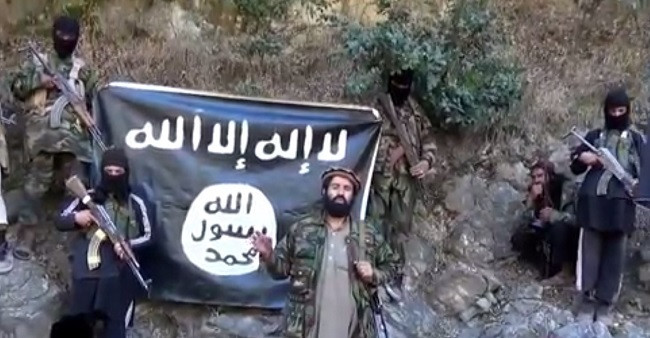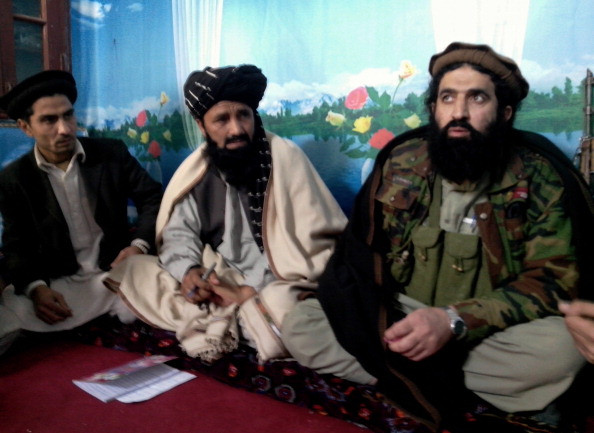Hafiz Saeed Khan: The former Taliban warlord taking Isis to India and Pakistan

Earlier this month the Islamic State (formerly known as Isis) anointed a former Taliban leader, known as Hafiz Saeed Khan, as their new overload in southern Asia and the sub-continent.
Saeed, who is 42 and is also known as Mulla Saeed Orakzai, has been appointed the leader of a new group called IS Khorasan, an offshoot of Abu Bakhr al-Baghdadi's militant group which spans Pakistan, Afghanistan, India and Bangladesh, as well as some parts of Central Asia.
The installation of Saeed, a former Tehrik-i-Taliban Pakistan (TTP), automatically makes him one of the most powerful warlords in the Middle East. Yet little is known about this highly dangerous individual.
Here, IBTimes UK pieces together Saeed's life, which began in peaceful surroundings but has since erupted in extremist violence and seemingly endless factional squabbles.
Saeed was born in 1972 in the town of Mamozai in the Orakzai Agency, a tribal area of Pakistan near the Afghan border. He got his early education from a local cleric, Mulana Shabit, before shifting to the Hangu district of Khyber Pukhtonkhwa, where he was admitted to the local school known as Darululoom Islamia Hangue.
One of Saeed's classmates, Mulana Shahidullah, remembers him as a studious pupil who learnt the Quran by heart in just one year, adding "I never saw Saeed fight someone except one time, when he fought with a classmate - and inured him badly."
Blooded against the Americans
After 9/11, when United States and Nato troops attacked Afghanistan, Saeed began his terrorist life, going to Kabul to fight against the people he perceived as invaders, and joining up with the Afghan Taliban. According to sources who wished to remain anonymous, he remained in Kabul for two years.
Our local sources also suggest Saeed became close to Baitullah Mahsud, an Islamist student from Pakistan who often travelled across the border to advise the Afghan Taliban in matters of Sharia law. In 2007 Mahsud was declared the inaugural leader of the incipient TTP. He appointed Saeed to the new leadership group, or Shura, and made him an Amir, or religious leader, for Orakzai.
Saeed's career as a militant was flourishing. By 2009 he was the TTP's chief in the Orakzai region, as well as a judge in the local courts. However, in August of that year, the killing of Mahsud in a US drone strike split the TTP in two, with Saeed at the centre of the schism.
Some commanders wanted Hakimullah Mahsud, a close friend to but no relation of Baitullah, to take over the leadership. But Saeed was against the decision and wanted his own close ally, Wali Ur Rahman, to become the overall chief instead. "The TTP split in two groups after Baitullah's killing and Saeed was not happy over the differences," said Abul Saboor Khan, a renowned analyst of tribal affairs.
The TTP split down the middle again in 2013, when Hakimullah was himself killed in a US drone strike. "Saeed was one of the three main contenders for the top slot of the TTP chief, and I think he was disheartened when Fazlullah [the current TTP chief] was nominated", Khan said.
Perhaps Saeed was still seething when he defected; perhaps he was simply jumping ship for the more powerful force, acting out of self-serving opportunism.
Finally, on 15 October, 2014, Saeed abandoned the TTP, along with five other Taliban leaders, and pledged allegiance to Isis chief Abu Bakr al-Baghdadi. Perhaps Saeed was still seething from the previous year's leadership struggle; perhaps he was simply jumping ship for the more powerful force, acting out of self-serving opportunism.
Mass defection
The defections ravaged the TTP. Saeed's fellow defectors were the TTP's former spokesman, Shahidullah Shahid; its Khyber Agency chief, Gul Zaman; Peshawar chief Mufti Hassan; Kurram chief Hafiz Quran Daulat, and Hangu chief Khalid Mansoor. All six men were key members of the TTP network, and were given positions in IS's brand-new Khorasan chapter.

Saeed's position as head of IS Khorasan was confirmed in a video message released by the militant group on 11 January. The video features a message by Shahidullah Shahid, who now serves IS as a spokesperson, just as he once did the TTP.
Perhaps unsurprisingly, the video showing Shahid's announcement also features the gruesome beheading of a Pakistani soldier, identified only as Manzoor. This is thought to be the first video published by IS Khorasan.
Little is known of Saeed's private life; indeed it is not even known when he got married, although we do know that Farooq Khan, who belonged to Saeed's village, arranged his marriage with his cousin. Saeed has two sons and one daughter with his wife, and according to Farooq, has since taken a second wife in the region of North Waziristan, although this is not confirmed.
What is widely known is that Saeed is famous as a hardliner; the fact that his first video as commander features a beheading should surprise no-one. Experts fear he is a major threat to Pakistan, even though the country's interior minister, Chaudhry Nisar Ali Khan, has ruled out the presence of IS within its borders on several occasions.

© Copyright IBTimes 2024. All rights reserved.





















